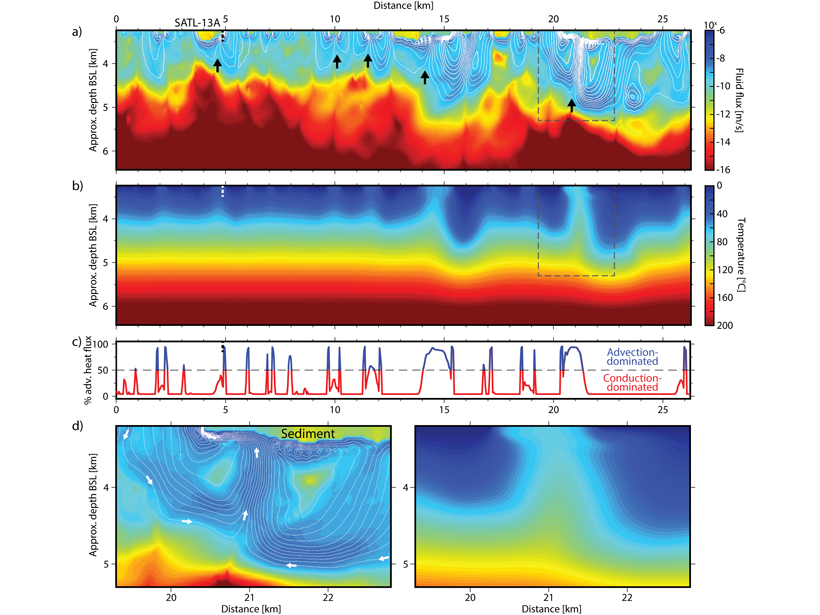Source: Journal of Geophysical Research: Solid Earth
Internal Earth cooling occurs by a combination of passive heat conduction and active fluid flux between the crust and the surface. While thermal conduction is the main cooling mechanism in most parts of the ocean basins, hydrothermal circulation dominates near mid-ocean ridges. However, the reach and intensity of off-axis circulation as the newly formed crust cools and migrates away from the spreading center is still poorly known.
By combining realistic maps of rock physical properties retrieved by seismic waveform tomography with hydrothermal modelling techniques, Kardell et al. [2021] present compelling evidence that hydrothermal circulation is a significant cooling factor up to crustal ages of 60 to 65 million year, in excellent agreement with previous estimates and observations. These results should be incorporated in Earth cooling models and may serve as a reference to plan future seafloor drilling expeditions.
Citation: Kardell, D. A., Zhao, Z., Ramos, E. J., Estep, J., Christeson, G. L., Reece, R. S., & Hesse, M. A. [2021]. Hydrothermal models constrained by fine-scale seismic velocities confirm hydrothermal cooling of 7–63 Ma South Atlantic crust. Journal of Geophysical Research: Solid Earth, 126, e2020JB021612. https://doi.org/10.1029/2020JB021612
—Valentí Sallarès, Associate Editor, JGR: Solid Earth
Text © 2021. The authors. CC BY-NC-ND 3.0
Except where otherwise noted, images are subject to copyright. Any reuse without express permission from the copyright owner is prohibited.

